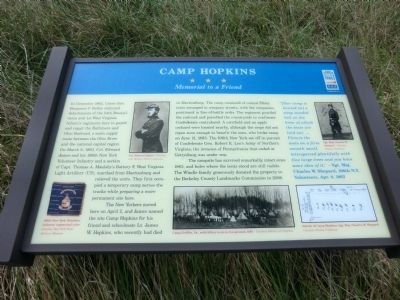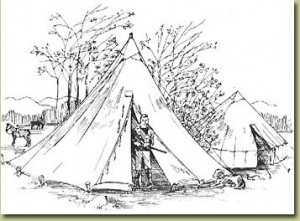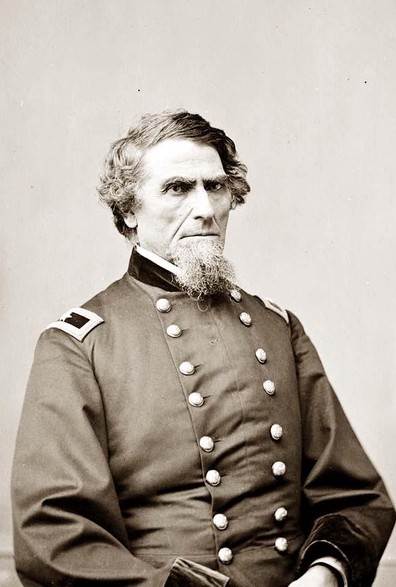Camp Hopkins Marker
Introduction
Text-to-speech Audio
Images
Camp Hopkins marker

A conical Sibley tent used by troops at Camp Hopkins

General Benjamin F. Kelley

Backstory and Context
Text-to-speech Audio
"[Our camp is located on] a steep wooded hill on the brow of which the tents are laid out. ... Picture the tents on a firm smooth swail, intersperced plentifully with fine large trees and you have some idea of it." - Sgt. Maj. Charles W. Shepard, 106th N.Y. Volunteers, Apr. 8, 1863
The importance of the Baltimore and Ohio Railroad during the Civil War cannot be overstated. It provided a life line to the troops and their cause. The B & O Railroad provided a main supply line between the Ohio River and the national capital region. Ultimately it was crucial to the Union’s victory and the outcome of the war could have been different if the railroad had been overtaken by the Confederates.
Camp Hopkins was the location General Benjamin F. Kelley stationed the 54th Pennsylvania and 1st West Virginia Infantry regiments to guard and repair this vital asset to his army in December 1862. Kelley had been a freight agent of the B & O railroad 10 years prior to his military service. In March of 1863, Colonel Edward James and his 106th New York Volunteer Infantry and a section of Capt. Thomas A. Maulsby’s Battery F, West Virginia Light Artillery (US), marched from Martinsburg and relieved Kelley's troops. The camp was yet to be named so Colonel James named the camp for a schoolmate and friend from Martinsburg, Lt. James W. Hopkins, who had recently died.
The camps were set up with "company streets" which resembled small villages Their living quarters were conical Sibley tents. These tents were 18 ft. in diameter and 12 ft. high. They were held up by a single pole standing in a metal tripod. Iron reinforcement in the top opening was suspended with chains from the pole and are still available for purchase today. The tents were arranged in a line-of-battle order and the companies patrolled the hillside around their campsite to guard the railroad and seize Confederate contraband.
This encampment was short-lived as the men broke camp on June 13, 1863, to set off in pursuit of Confederate Gen. Robert E. Lee’s Army of Northern Virginia as the invasion of Pennsylvania that ended at Gettysburg had begun.
Remarkably, the holes were the tents once stood are still visible. This property was generously donated to the Berkeley County Landmarks Commission in 2008 by the Windle family.
